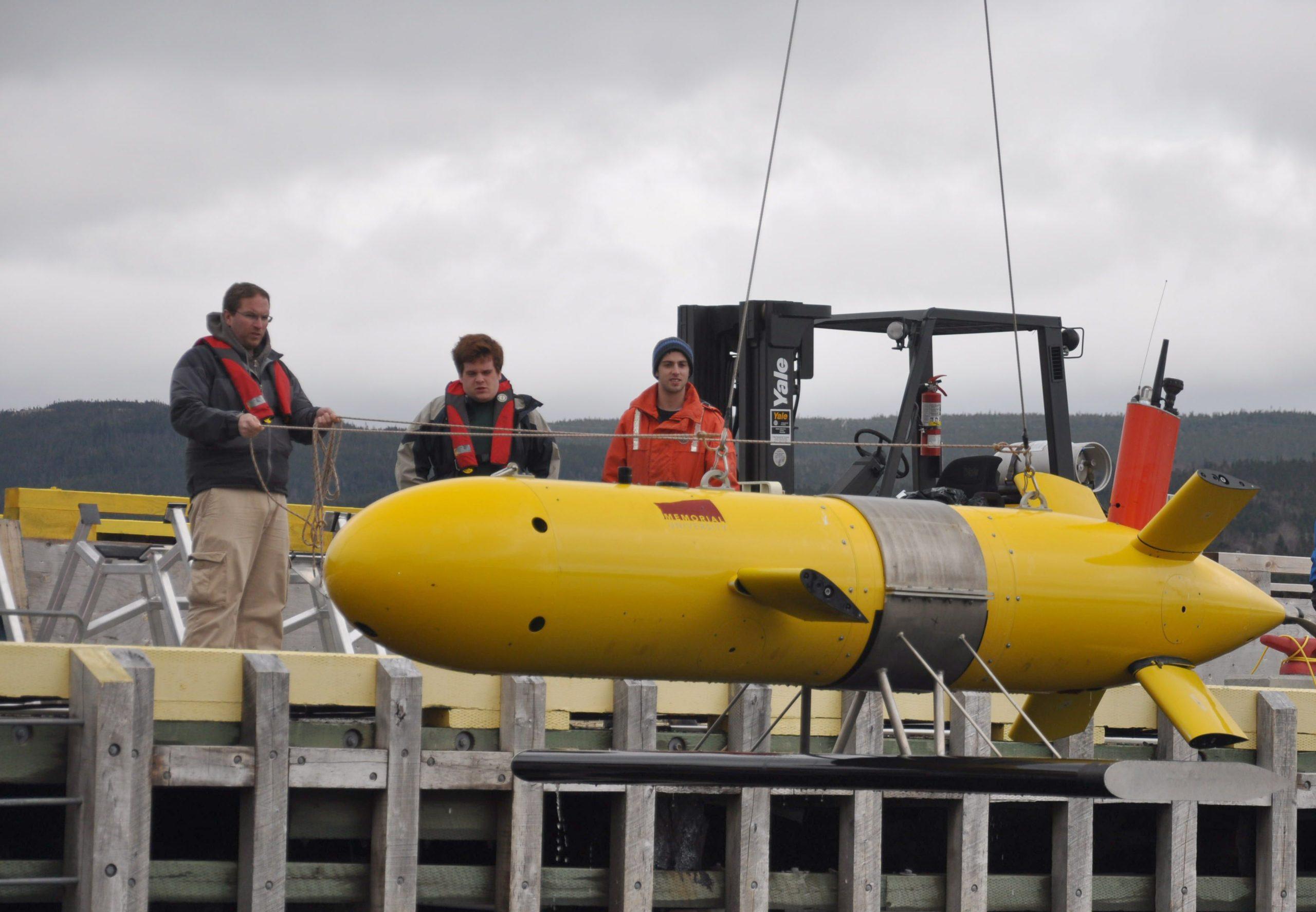
Fisheries and Marine Institute of Memorial University of Newfoundland
Holyrood Marine Base (HMB)
“HMB supports at-sea research and training priorities of the Marine Institute, and the broader Memorial University community.”
These priorities are primarily related to ocean science, ocean technology, fish harvesting technology, fish handling methods, aquaculture and the marine ecosystem.
The guiding principles of CTEC’s applied research and development efforts are to:
- respond to the evolving technology needs of key ocean industries such as fisheries, shipping, offshore oil and gas
- wherever possible and practical, work collaboratively with the global ocean technology industry
- provide work experience and employment opportunities for students and graduates of the Marine Institute’s School of OceanTechnology programs
“Ctec’s mission is to enhance the safety, efficiency, sustainability and profitability of maritime pursuits through the application of technology”.
As Marine Institute’s “Portal to the Ocean” HMB provides a venue for practical and hands-on experience for students in a variety of degree and diploma programs including marine environmental studies, marine biology, marine ecotourism, diving and oil spill response base. HMB is also the site for industry-led ‘at sea’ research, technology development and training”.
In early 2013, HMB became the permanent home of the Marine Institute’s Centre for Applied Ocean Technology (CTEC) www.mi.mun.ca/ctec “CTEC collaborates with industry and others on the development and application of technology for the practical benefit of all sectors of the maritime community
CTEC undertakes applied research and development in four key areas:
Ocean Mapping
CTEC’s strategy for ocean mapping extends beyond a single platform. It strives to capitalize on every maritime asset as a data collection opportunity – navigational aids, fishing vessels and more. Its mapping philosophy is to collect data once, store closest to source, and use it many times.
Ocean Observing Systems
Ocean observing systems are sophisticated ocean monitoring systems based on networks of sensors and the data they generate. The goal of ocean observing systems is to improve access to data and information to improve decision-making by a broad range of public and private sector stakeholders.
The interests of the stakeholders include:
- the impact of the marine and ocean sector on global climate change
- sustainable use and better understanding of marine resources including fisheries, marine plants and offshore hydrocarbons security and defence, meteorology, oceanography, and marine transport
- and improved information on the risk of natural disasters such as tsunamis and hurricanes
The primary drivers of ocean observing systems are:
- policy (regulation, sustainable development)
- science (knowledge)
- and operations (safety, efficiency)
The Centre for Applied Ocean Technology’s focus is on serving the information needs of individuals who work on the ocean or are responsible for marine operations and their aim is to provide dynamic information that enhances safety, operational efficiency and situational awareness.
CTEC has a strong track record in the design, implementation and operation of open architecture ocean observing systems
Ocean Instrumentation
Sensors and other electronic devices are our window to the world beneath the waves and supply the raw material of the information age. The Centre for Applied Ocean Technology is focused on the development and deployment of next generation Smart Ocean Sensors that are self-initiating, self-powering, remotely monitored and controlled, and able to communicate with other devices in an expanding global web.
Underwater Intervention
Remotely operated vehicles (ROVs), autonomous underwater vehicles (AUVs) and gliders are designed as real-life avatars to observe, sample and interact with the underwater world. Underwater vehicles are increasingly being used to extend mankind’s understanding of, and ability to operate in the ocean environment. ROVs enable the ability to observe, sample and repair underwater installations without endangering human life.
AUVs are routinely used on ocean mapping and surveillance missions, including under-ice access in Arctic oceans. Gliders, a unique class of AUV, have the ability to sample vast tracts of ocean efficiently.
The Centre for Applied Ocean Technology has the expertise and technology to assist engineers and scientists to develop, deploy and refine the next generation of underwater vehicles.
Underwater intervention encompasses all activities that involve interaction with the subsea environment through direct human or robotic means. It includes the use of divers, ROVs, AUVs, and ocean gliders.These underwater vehicles are increasingly being used as practical, safe and economically feasible tools to perform a variety of deep-sea interventions. Operators of these highly technical systems are widely needed by offshore industries, particularly offshore oil and gas.
Likewise, new advancements to improve the functionality, robustness and cost-effectiveness of these technologies are continually being sought.

